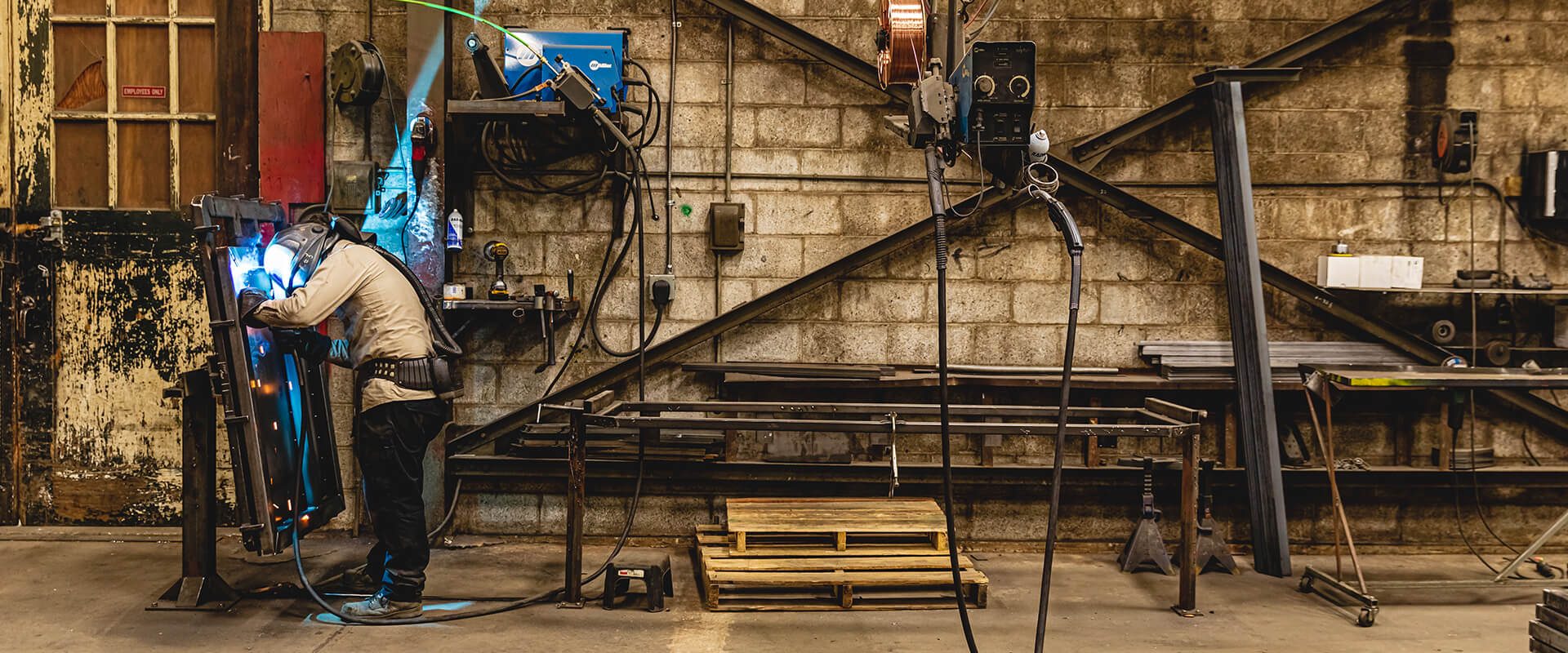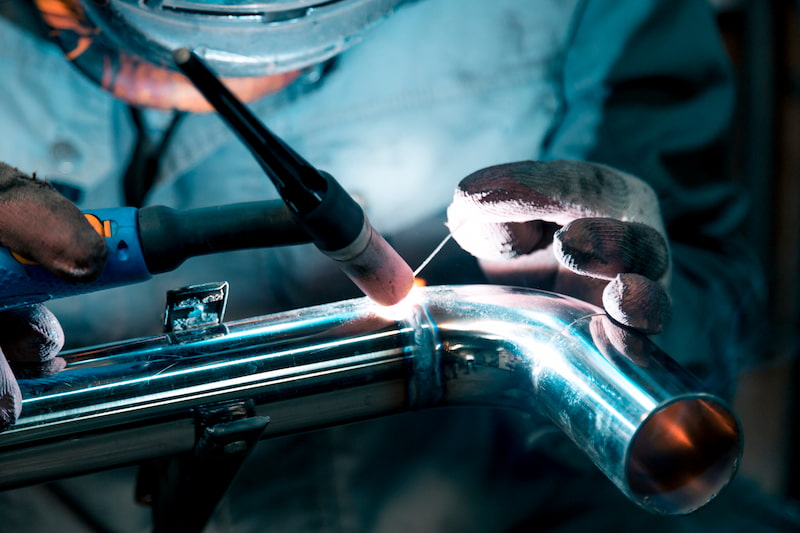Everything about Welding: Secret Insights Into Techniques and Finest Practices for Success
Welding includes a variety of techniques, each suited for specific products and applications. Recognizing these techniques, such as GMAW, SMAW, and TIG, is crucial for attaining excellent outcomes. In addition, the right devices and safety and security methods can not be ignored. As preparation and fixing play crucial duties in the welding procedure, grasping these elements can significantly improve the high quality of the final item. What are the vital variables that assure a successful weld?
Comprehending Different Welding Techniques
Welding strategies incorporate a selection of approaches, each matched to particular applications and products. Amongst the most typical methods are Gas Metal Arc Welding (GMAW), Secured Metal Arc Welding (SMAW), and Tungsten Inert Gas Welding (TIG) GMAW, additionally referred to as MIG welding, is preferred for its rate and versatility, making it excellent for thin materials. SMAW, or stick welding, is favored for its simplicity and efficiency in outdoor settings, especially with thicker steels. TIG welding offers precision and control, making it ideal for elaborate work and non-ferrous steels (Montana Mobile Welding and Repair Welding). Each technique has its unique advantages and factors to consider, allowing welders to select the most effective technique based upon the job's requirements, product type, and desired results. Understanding these strategies is essential for effective welding
Important Welding Devices and Devices
While different welding strategies call for details abilities, the ideal tools and tools are equally necessary for achieving top quality results. Important welding devices includes welding equipments, which vary relying on the strategy-- such as MIG, TIG, or stick welding. Protective equipment, including gloves, aprons, and safety helmets, assurances safety and security and comfort during the procedure. Additionally, components and clamps aid secure products in place, making sure precision in welds. Consumables like welding rods, wire, and protecting gas are also essential components that affect the high quality of the weld. In addition, devices such as grinders and cutters help with surface prep work and post-weld ending up, adding to an expert end result. Buying top notch tools ultimately boosts the performance and performance of welding jobs.
Security Practices in Welding
Appropriate safety methods are crucial in the welding industry to protect workers from potential risks. Welders must put on ideal individual safety tools (PPE), including headgears with proper shading, handwear covers, and flame-resistant apparel. Appropriate air flow is important to decrease exposure to unsafe fumes and gases created throughout the welding procedure. Furthermore, workers must be learnt the right handling of welding equipment to avoid mishaps. Fire security actions, such as keeping flammable materials far from the welding location and having fire extinguishers easily available, are needed. Regular assessments of tools and work spaces can help recognize prospective hazards prior to they lead to mishaps. By adhering to these safety practices, welders can create a more secure working setting and decrease dangers connected with their trade.
Preparing Materials for Welding
Preparing products for welding is a crucial action that considerably influences the quality and honesty of the last product (Montana Mobile Welding and Repair Belgrade Welding). Proper prep work entails cleaning up the surfaces to get rid of contaminants such as rust, dust, and oil, which can jeopardize the weld. Techniques such as grinding, sanding, or using solvents are typically utilized to achieve a tidy surface area. In addition, guaranteeing that the materials fit together comfortably is important; voids can bring about weak welds. It's additionally essential to think about the alignment and positioning of the elements, as this will affect the ease of welding and the final result. Ultimately, choosing the ideal filler product and making sure compatibility with the base steels is crucial for achieving solid, resilient welds
Tips for Getting High-Quality Welds
Achieving premium welds calls for interest to detail and adherence to best methods throughout the welding process. Correct joint preparation is important, guaranteeing surfaces are complimentary and tidy from impurities. Choosing the suitable filler material and welding technique based upon the base metals is vital for excellent bonding. Keeping constant travel rate and angle while welding can prevent defects and advertise uniformity. In addition, managing warmth input is vital; extreme warm can result in warping and damaged joints. If essential, routinely inspecting the welds throughout the process allows for immediate changes. Finally, employing ideal post-weld therapies, such as cleaning and stress and anxiety alleviation, can enhance the resilience and integrity of the weld, inevitably making certain an effective end result.
Fixing Usual Welding Issues
Welding commonly provides obstacles that can impact the quality and honesty of the last item. Typical issues such as porosity, inconsistent weld beads, and overheating can arise, each requiring certain repairing methods. Comprehending these issues is vital for welders to enhance their skills and attain perfect outcomes.
Porosity Problems Explained
Although porosity can often be ignored, it remains a crucial problem in welding that can endanger the stability of an ended up item. Porosity describes the presence of little gas pockets within the weld bead, which can deteriorate the joint and lead to early failing. This problem usually emerges from contaminants, moisture, or incorrect shielding gas coverage throughout the welding procedure. To minimize porosity, welders need to confirm that the base materials are dry and tidy, utilize suitable shielding gases, and maintain consistent welding parameters. On a regular basis evaluating the devices and atmosphere can additionally aid identify possible issues before they manifest in the weld. Attending to porosity efficiently is crucial for achieving solid, durable welds that fulfill top quality requirements.

Irregular Weld Beans
Inconsistent weld grains can substantially influence the quality and strength of a finished item. Numerous elements contribute to this concern, consisting of inappropriate travel speed, inaccurate amperage setups, and inconsistent electrode angles. When the welder relocates too rapidly, a bead may appear slim and do check that not have infiltration, while relocating as well slowly can cause excessive accumulation. Additionally, utilizing the incorrect amperage can result in either damaging or extreme spatter, both of which compromise weld integrity. The welder's method, such as inconsistent torch activity, can also cause uneven grain appearance. To mitigate these troubles, welders should concentrate on keeping consistent, controlled movements and guaranteeing correct devices setups to accomplish harmony in their welds. Consistency is vital to accomplishing dependable and strong welds.
Overheating and Warping Issues
Extreme warm during the welding process can result in considerable overheating and contorting issues, influencing the architectural integrity of the work surface. These troubles frequently show up as distortion, which can jeopardize alignment and fit-up, making more assembly challenging. Elements adding to overheating include the option of welding parameters, such as voltage and take a trip speed, along with the kind of material being bonded. To alleviate these problems, welders must maintain regular traveling rate and ideal heat input while keeping an eye on the workpiece temperature. Additionally, pre-heating or post-weld warm treatment can aid ease tensions triggered by fast air conditioning - Fabrication. Routine evaluation and adherence to ideal techniques are essential in avoiding getting too hot and ensuring the long life and reliability of welded structures
Regularly Asked Concerns
What Are the Career Opportunities in the Welding Market?
The cast iron welding near me welding sector provides varied profession possibilities, consisting of positions as welders, engineers, teachers, and assessors. Experts can function in production, building, aerospace, and vehicle industries, taking advantage of strong need and affordable wages in numerous duties.
How Can I Improve My Welding Speed Without Compromising High Quality?
To improve welding speed without giving up top quality, one ought to practice efficient methods, preserve equipment, optimize setups, and improve hand-eye control. Normal training and seeking comments can likewise greatly add to attaining quicker, premium welds.
What Accreditations Are Readily Available for Welders?
Numerous accreditations exist for welders, including those from the American Welding Society (AWS), the National Facility for Building And Construction Education And Learning and Study (NCCER), and numerous industry-specific companies. These credentials boost employability and demonstrate ability proficiency.
How Does Welding Affect the Features of Metals?
Welding influences the buildings of steels by changing their microstructure, which can cause adjustments in toughness, solidity, and ductility. Warm input and air conditioning rates throughout the process substantially impact these product qualities.
Can I Weld Dissimilar Metals Together?

Comments on “How to achieve perfect fusion with Montana Mobile Welding and Repair Belgrade Fabrication”